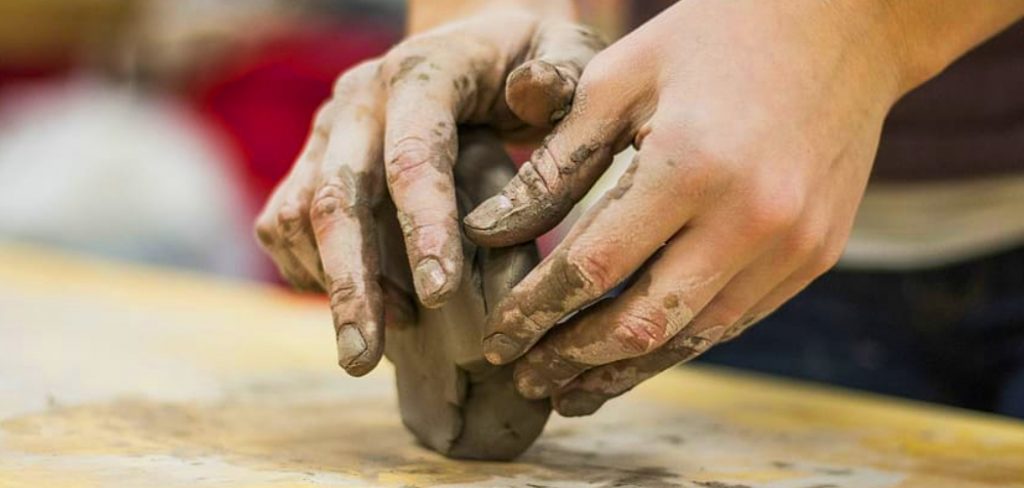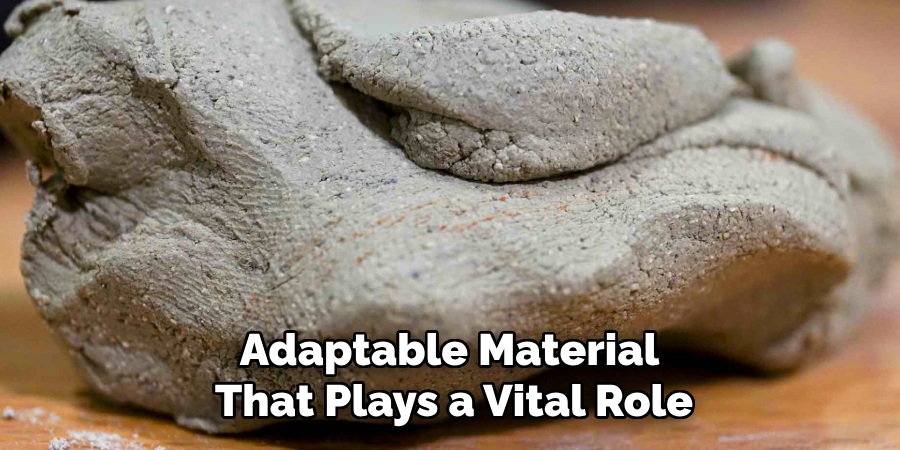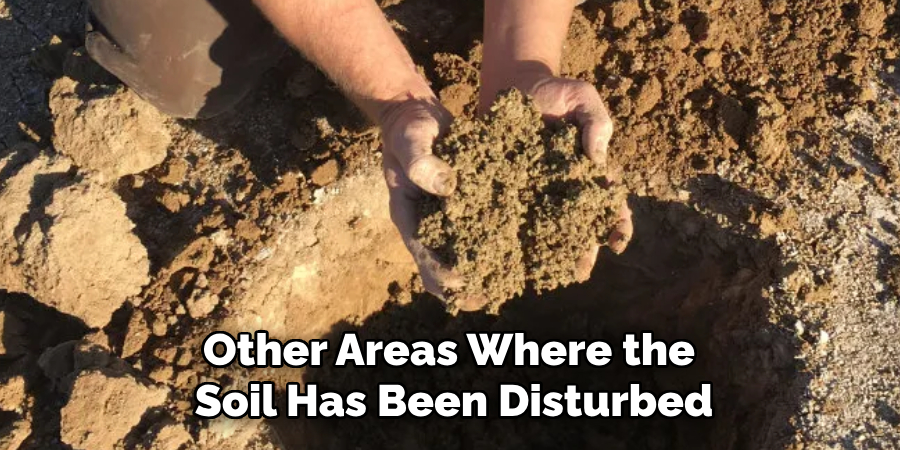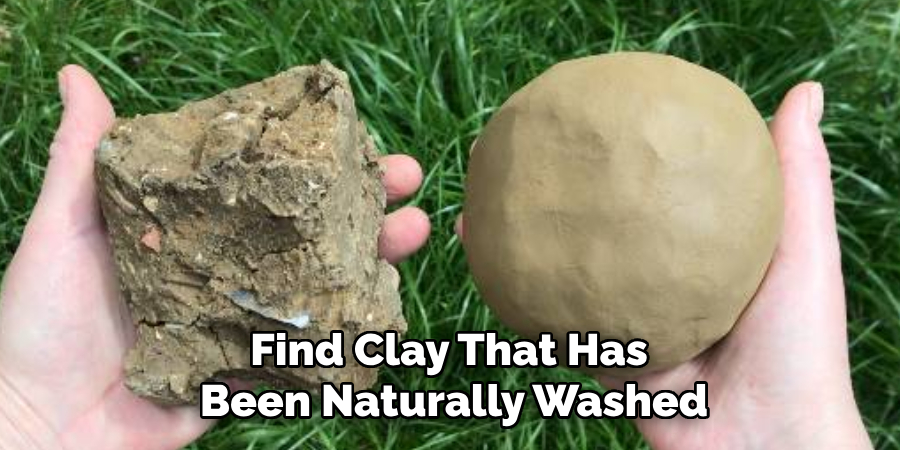Clay is a versatile and widely used material found in a variety of natural environments. Whether you’re a potter, gardener, or simply curious about its uses, knowing how to locate and identify clay can be incredibly valuable. In this blog post we will show you how to find clay so that it functions properly. Read on to learn more about which components and tools are needed for the job as well as detailed instructions on completing the task!

Natural Clay and Its Uses
Natural clay is a highly adaptable material that plays a vital role in many industries and activities. Found primarily near riverbanks, lakes, or areas with slow-draining soil, natural clay has a unique composition of fine particles and minerals, making it ideal for a range of applications. Artists and potters use clay to create beautiful ceramics and sculptures, while gardeners often rely on its water-retention properties to improve soil quality.
Additionally, clay is a key ingredient in construction materials like bricks and tiles, as well as in skincare products where its cleansing and detoxifying properties are highly valued. Its versatility and abundance make natural clay an essential resource in both traditional and modern practices.
Understanding Different Types of Clay
Clay comes in various types, each possessing unique characteristics that make it suitable for specific uses. The most common types of clay include earthenware, stoneware, and porcelain. Earthenware clay is soft, porous, and widely used for crafting decorative items and pots due to its ease of handling and low firing temperature. Stoneware clay is more durable and less porous, making it ideal for functional items like plates, bowls, and mugs.
Porcelain clay, known for its fine texture and translucency, is perfect for creating delicate and intricate pieces of art or tableware. Additionally, bentonite and kaolin clays are popular in industries like cosmetics and paper manufacturing for their absorbent and refining properties. Understanding the differences between these clay types is crucial when selecting the right clay for your specific project or purpose.
10 Methods How to Find Clay
1. Searching Along Riverbanks and Streams

One of the best places to find natural clay is along riverbanks and streambeds. Clay is often deposited in these areas due to erosion, where water carries fine sediment and deposits it in slow-moving sections of the river. Look for areas where the river has carved into the land, exposing layers of soil. Clay often appears as smooth, sticky, and dense material that holds its shape when molded. A good test is to take a handful of the material, wet it, and roll it into a coil. If it holds together without crumbling, it’s likely to be clay. Be mindful of local regulations when collecting natural materials from waterways.
2. Digging in Lakeshores and Pond Beds
Still bodies of water such as lakes and ponds are also prime locations for clay deposits. Clay forms in these areas when fine mineral particles settle at the bottom over time. During dry seasons or droughts, the water level recedes, exposing layers of compacted clay. Walk along the shoreline and look for patches of soil with a smooth, sticky texture. Clay found in these areas is often rich in organic material, so it may require filtering or refining before use. If the pond has dried up completely, digging a few inches below the cracked surface can reveal usable clay.
3. Exploring Hillsides and Eroded Cliffs

Hillsides, cliffs, and road cuts can reveal layers of clay that have been exposed by natural erosion. These areas often contain visible strata, with clay appearing as a dense, uniform layer beneath sand, topsoil, or rock. Clay in these locations is often mixed with other sediments, so it may need to be refined before use. A simple field test is to moisten the soil and squeeze it—if it becomes sticky and pliable rather than grainy, it’s likely clay. Collecting from these sources requires minimal digging, making it an accessible option for beginners.
4. Digging in Your Own Backyard
Many people don’t realize that clay might be hiding right beneath their feet. If you have a garden or outdoor space, digging below the topsoil can sometimes reveal clay deposits. Clay is more likely to be present in areas with poor drainage since it retains water and creates compacted layers underground. To test for clay, take a small sample of damp soil and roll it into a ball. If it stays intact and can be shaped, you’ve found clay. If your backyard has a construction site or foundation work, you may already see exposed clay layers without the need for digging.
5. Identifying Clay in Plowed or Disturbed Land
Construction sites, plowed fields, and other areas where the soil has been disturbed often expose clay layers that would otherwise remain hidden underground. Pay attention to areas where excavation has taken place, such as roadwork or pipeline trenches. In these locations, you can often find clay mixed with other soil layers. A good indicator is soil that remains sticky when wet and hardens when dry. Be sure to ask for permission before collecting clay from private or construction sites.
6. Using a Soil Map to Locate Clay-Rich Regions
If you want to find clay efficiently, using a soil map can save time and effort. Soil maps are available from geological survey organizations and can indicate regions where clay deposits are naturally abundant. These maps classify soil types based on their composition, helping you pinpoint locations where clay is most likely to be found. Clay-rich areas are often marked as having high percentages of silty or loamy soil. By studying a soil map, you can target specific locations before heading out to search in the field.

7. Observing the Vegetation and Landscape
Certain plants and landscape features can indicate the presence of clay. Because clay holds water better than sandy soil, areas with poor drainage and water retention are more likely to contain clay. Wetlands, marshy areas, and places with standing water after rain are good indicators of clay-heavy soil. Additionally, some plants, such as willows and sedges, thrive in clay-rich environments. By observing plant life and water behavior in an area, you can make an educated guess about the likelihood of finding clay beneath the surface.
8. Testing Soil Composition with a Jar Sediment Test
A simple way to check if an area contains clay is to perform a sediment test using a glass jar. Collect a sample of soil from the suspected location and place it in a jar with water. Shake it well and let it settle for several hours. The heavier sand and gravel will sink to the bottom, while clay particles will remain suspended in the water before forming a fine layer at the top. If you see a significant layer of fine sediment, it indicates a high clay content. This test is especially useful if you’re unsure whether a soil sample contains enough clay to be usable.
9. Observing Roadside Ditches and Drainage Areas

Ditches and drainage areas often collect fine sediment, including clay, as water flows overland. These areas can be excellent places to find clay that has been naturally washed out from higher ground. After heavy rainfall, check ditches for deposits of smooth, sticky material. Because these deposits may contain contaminants from road runoff, you may need to refine and filter the clay before using it for pottery or crafts. However, for general clay identification, these locations provide a quick and easy way to gather samples.
10. Collecting from Dry Riverbeds and Old Stream Channels
Ancient riverbeds and dry stream channels often contain clay deposits that were left behind by flowing water over time. These locations are particularly good for finding high-quality clay that has already been naturally refined by water movement. Look for areas where the soil is cracked or has a smooth, compacted texture. Digging a few inches below the surface can reveal rich clay deposits. This method is particularly useful in arid regions where seasonal water flow has left behind concentrated clay beds.
Maintenance and Upkeep
Once you’ve collected clay, proper maintenance and storage are essential to ensure its usability for future projects. Start by removing any debris, stones, or organic matter from the clay through refining and filtering processes. Afterward, store the clay in an airtight container or a sealed plastic bag to prevent it from drying out. If the clay does begin to lose moisture over time, you can rehydrate it by adding small amounts of water and kneading it until it regains its pliable consistency.
Additionally, keep your clay in a cool, dry place to avoid exposure to extreme temperatures or direct sunlight, which can lead to inconsistent textures or cracking. Periodic checks are recommended to monitor for mold growth, especially for natural clay that hasn’t been processed or treated. If mold develops, kneading the clay thoroughly or adding a small amount of vinegar can help eliminate it. Proper maintenance allows you to preserve your clay’s quality, making it readily available for crafting, pottery, or other purposes whenever needed.
Conclusion
Finding and collecting clay can be an exciting and rewarding experience, whether you’re a beginner or an experienced enthusiast. By exploring diverse environments such as riverbanks, hillsides, and even your own backyard, you can discover the natural beauty and utility of this versatile material. Remember to observe the landscape, perform simple tests, and consider refining your clay to enhance its quality for your projects. Thanks for reading, and we hope this has given you some inspiration on how to find clay!
Specialization:
- Master of wheel-throwing, hand-building, and advanced glazing techniques
- Focus on creating both functional pottery and decorative art pieces
Recognition:
- Celebrated by collectors and art enthusiasts for creating one-of-a-kind pieces that blend artistry with functionality
- Participates in local and national exhibitions, earning accolades for his innovative designs and craftsmanship
Passion:
- Deeply committed to exploring and pushing the boundaries of ceramic artistry
- Continuously experiments with new materials, firing techniques, and artistic concepts to evolve his craft
Personal Philosophy:
- Believes in the transformative power of art, aiming to evoke emotions and connections through his ceramic creations
- Advocates for sustainability in ceramics, using eco-friendly materials and practices whenever possible


